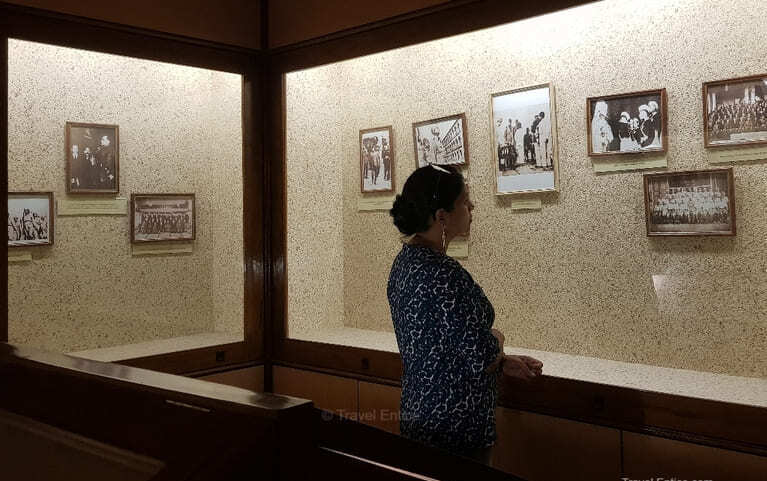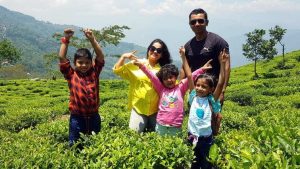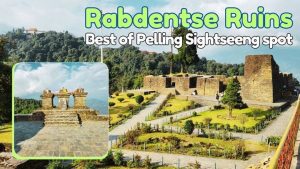The historic white residence of Gidda Hills in Kurseong, primarily belonged to late Sarat Chandra Bose, although famous for being a temporary home for Netaji Subhash Chandra Bose, the greatest freedom fighter and national hero of India. In 1996, the Government of West Bengal took over the property, initiating a comprehensive restoration and renovation effort. Subsequently, the management of the house was entrusted to the Netaji Institute for Asian Studies in Kolkata. In a later phase, with the intention of preserving Netaji’s memories in Kurseong, the house underwent a transformation and became the Netaji Subhash Chandra Bose Museum, as well as a center for studies on Himalayan languages, society, and culture, under the aegis of the Netaji institute for Asian studies.
The brief History of Netaji Museum, Kurseong
Acquired by Late Sarat Chandra Bose in June 1922, this residence became a significant abode. Sarat Chandra Bose interned here from 1933 to 1935. Subsequently, during 1936-37, Netaji Subhash Chandra Bose shifted here for two short stays, finding solace in Kurseong’s tranquility. It was within these serene walls that he penned numerous political correspondences and speeches, drawing inspiration from the peaceful ambiance.

From this very dwelling, Netaji made substantial contributions to India’s national affairs and freedom struggle. Remarkably, he drafted a speech sitting in this peaceful ambiance that he later delivered as the President of the Haripura Congress in 1938. Additionally, from here he composed letters addressing Pandit Jawaharlal Nehru and Kaviguru Rabindranath Tagore, pertaining to the profound song “Vande Mataram.” Also, sitting here he wrote several letters to his spouse, Emilie Schenkle.
Notably, Deshbandhu Chittaranjan Das, another stalwart in the fight for freedom, graced this residence with his presence, spending several weeks here before his demise in Darjeeling on June 16, 1925.
Exploring Netaji Subhash Chandra Bose Museum as a Tourist
Encompassing profound historical significance, the residence once owned by Sarat Chandra Bose has been meticulously preserved and revitalized by the West Bengal government in 1997. This transformation culminated in the establishment of the Netaji Subhash Chandra Bose Museum in 2000, and opened up to general public.
The exterior of the house is graced by a serene garden area, featuring a sculpture of Netaji, an abundance of plants and trees, and a remarkable Camelia tree, lovingly planted by Sarat Chandra Bose in 1934.

Upon entering the museum through wooden glass doors, visitors are greeted by the vintage interior. The house is divided into four spacious rooms and a substantial open corridor (once used to be a sitting and dining area).
Each room’s walls are adorned with rare photographs of Netaji Subhash Chandra Bose, meticulously narrating his journey of life and valor step by step. These photographs chronicle his early years, education, political endeavors, fight for freedom, interactions with foreign and Indian leaders, leadership of the Azad Hind Militants, moments with Emilie Schenkle, and the nostalgic snapshot of his final journey.
Additionally, one room and portions of the open corridor are dedicated to preserving the furnitures used during Netaji’s stay in this Gidda Hills, Kurseong residence. Also, some of his used materials, such as Azad Hind uniform, shoes, and several other things are preserved here respectfully.

In its true essence, the Netaji Subhash Chandra Bose Museum in Kurseong serves as an emblem of the heritage embedded in India’s struggle for freedom, a testament to the indomitable spirit of the great warrior, Subhash Chandra Bose.
How to Visit Netaji Subhash Chandra Bose Museum, Kurseong
Situated in close proximity to Gidda Hills, Kurseong, this residence offers a convenient visit for tourists. If you’re travelling to Kurseong, a straightforward approach is to arrange for a car and directly experience this location.
Alternatively, a more comprehensive choice would be to secure a full-day Kurseong excursion that encompasses various attractions, including this historic house. Typically, most tour operators incorporate this site as a pivotal stop within their day-long itineraries.
Other places to visit nearby
Explore the following curated selection of nearby attractions worth visiting in the vicinity of the Netaji Subhash Chandra Museum:
- Gidda Hills viewpoint (Rock Garden)
- Eagle’s Crag
- Heaven
- Top station
- Kurseong Monastery
- Heritage Chimney Park
- Pine forest
- Haunted Church
Foods near Netaji Museum
Upon crossing the road following your visit to the Netaji Subhash Chandra Bose Museum, you’ll you’ll find some food sacks in front of the Gidda Hills Viewpoint (Rock Garden). They serve Momo and noodles at reasonable price. If you are hungry, taste them up.
Wrapping up
The Netaji Museum in Kurseong stands as a reverential testament to the indomitable spirit of Netaji Subhash Chandra Bose, a prominent figure in India’s fight for freedom. The museum’s meticulously preserved artifacts, including personal belongings, photographs, and documents, provide an immersive journey through his extraordinary life and contributions.
Nestled within the tranquil surroundings of Gidda Hills, the museum offers visitors a profound insight into Netaji’s visionary leadership and unwavering dedication to the nation. It serves as a place of homage and inspiration, capturing the essence of a remarkable era in India’s history.
Dr. Suvankar Das is a scientific advisor by profession, associated with a CRO organization. He pursued his doctoral degree in Chemistry in 2015. Later, he worked as a postdoctoral researcher & scientist in a couple of institutes/companies.
Besides his scientific journey, Dr. Das is also a passionate traveler and travel blogger. He loves to share all his travel experiences with other travelers so that everyone can enjoy hassle-free holidays with their own tour plans.
He believes, the most beautiful thing in this world is the WORLD itself. so there is no way to live like a clock; rather live it like a compass!





![Lamahatta Eco Park: A Nature Lover's Paradise [Know Everything before visit] 9 Read more about the article Lamahatta Eco Park: A Nature Lover’s Paradise [Know Everything before visit]](https://travelentice.com/wp-content/uploads/2023/06/Lamahatta-Eco-Park-Sun-and-cloud-300x169.jpg)

